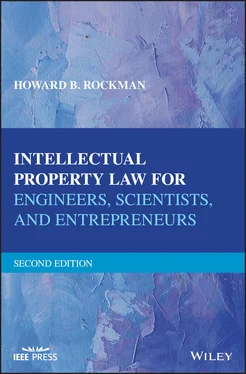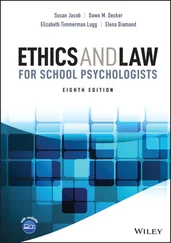Plant patents are granted to one who invents or asexually reproduces any distinct and new variety of plant, including cultivated spores, mutants, hybrids, and newly found seedlings, other than a tuber‐propagated plant or a plant found in an uncultivated state.
Asexually propagated plants are those that are reproduced by means other than from seeds, such as by the rooting of cuttings, by layering, budding, grafting, inarching, etc. With reference to tuber‐propagated plants, for which a plant patent cannot be obtained, the term “tuber” is used in its narrow horticultural sense as meaning a short, thickened portion of an underground branch. Examples of plants covered by the term “tuber‐propagated” are the Irish potato and the Jerusalem artichoke.
An application for a plant patent consists of the same parts as other applications: specification, claim, and illustration. The term of a plant patent is 20 years from the date on which the application for the patent was filed in the United States, or, if the application contains a specific reference to an earlier‐filed application, 20 years from the date the earliest application was filed.
The specification of a plant application should include a complete, detailed description of the plant and its characteristics that distinguish the new plant over related known varieties, and its antecedents, expressed in botanical terms in the general form followed in standard botanical textbooks or publications dealing with the varieties of the kind of plant involved (evergreen tree, dahlia plant, rose plant, apple tree, etc.), rather than a mere broad, non‐botanical characterization such as commonly found in nursery or seed catalogs. The specification should also include the origin or parentage of the plant variety sought to be patented, and must particularly point out where and in what manner the variety of plant has been asexually reproduced. The Latin name of the genus and species of the plant should be stated. Where color is a distinctive feature of the plant, the color should be positively identified in the specification by reference to a designated color as given by a recognized color dictionary. Where the plant variety originated as a newly found seedling, the specification must fully describe the conditions (cultivation, environment, etc.) under which the seedling was found growing, to establish that it was not found in an uncultivated state.
A plant patent is granted on the entire plant. It therefore follows that only one claim is necessary, and only one is permitted.
The oath or declaration required of the applicant for a plant patent, in addition to the statements required for other patent applications, must include the statement that the applicant has asexually reproduced the new plant variety. If the plant is a newly found plant, the oath or declaration must also state that the plant was found in a cultivated area.
Plant patent drawings are not mechanical drawings and should be artistically and competently executed, disclosing all the distinctive characteristics of the plant capable of visual representation. When color is a distinguishing characteristic of the new variety, the drawing must be in color. Two duplicate copies of color drawings must be submitted.
Specimens of the plant variety, its flower or fruit, are not submitted, unless specifically requested by the examiner. Plant patent applications may be published pursuant to Title 35, U.S. Code, Section 122(b). A plant patent application is the only type of patent application filed with the USPTO that is not permitted to be filed electronically.
The Plant Variety Protection Act (Public Law 91577), approved December 24, 1970, provides for a system of protection for sexually reproduced varieties, for which protection was not previously provided, under the administration of a Plant Variety Protection Office within the U.S. Department of Agriculture.
Plant patents are quite important to the agricultural industry in the United States, as well as the flower industry. For example, there has been controversy between the manufacturers of patented seed corn and the farmers who raise seed corn using the patented seeds, who then take the results of that crop and plant the seeds themselves for their new crop. The courts have held that the patent was enforceable, and that the farmers could not use the patented seed to plant their next years crop without obtaining a license. See: Bowman v. Monsanto , 569 U.S. 278(2013).
As touched on previously, process patents have been extended recently to cover methods of doing business, which were not considered as protected under the patent laws until a court decision in 1998. Also, computer‐related inventions are now subject to patent protection under certain conditions, as well as biotechnology creations, such as genomes and DNA strains. See Chapters 13and 14for more on these. As science progresses and creates totally new categories of subject matter, the patent law is initially seen as a bulwark against the protection of such new technology. However, once the importance of such new technology to the economy and to the welfare of society as a whole is realized, then the patent laws are generally interpreted by the courts to allow patent protection for such new technologies.
3.3 HOW TO DETERMINE WHAT TO PATENT AND WHAT NOT TO PATENT
3.3.1 Broadly, What Can and Cannot Be Patented Under the Law
To be eligible for a patent, an invention must fall within one of the categories of patentable subject matter. Thus, not all inventions are patentable. Normally, the USPTO is somewhat liberal in applying the limitations of the invention categories, providing that an invention is presented for examination in a suitable fashion.
To understand what may be patentable, it is helpful to first discuss items that are not patentable. Unpatentable subject matter includes business forms, perpetual motion machines (because they are not useful under the Constitutional mandate), promotional advertising schemes, intended results of desired goals, functions without any apparatus to perform those functions, nebulous or abstract concepts or ideas, items appearing in nature, and laws of nature. However, the useful and novel application of a law of nature or abstract idea could be subject to patentability. Therefore, while desired functions are not patentable, the product or method that provides that function can be patented, while not the mere result.
In general terms, to be patentable, an invention must be useful, novel, and unobvious. This presumes, of course, that the invention first falls into one of the patentable categories mentioned earlier. “New” and “useful” are requirements that are easy to ascertain and understand. The unobviousness requirement has provided more difficulty over the years, as discussed in Chapter 6.
A process or method patent can be obtained to cover a new use for a known apparatus or composition—for example, a known pharmaceutical or an existing machine. Using a known asthma drug to suppress pre‐term labor contractions would be a new use for a known composition, and would be patentable subject matter as a new method.
3.3.2 From a Business Standpoint, What Should Be Patented
There are many reasons that go into deciding whether a patent should be obtained for a particular invention. The first criterion, of course, is whether or not the invention is patentable, based on the previously mentioned criteria. Another consideration is the importance the invention has to the profitability of the company for whom the inventor works. Also, an independent inventor can determine what importance the invention will have to that inventor’s future economic situation. A further consideration is whether or not there exists a market for the product or process which will include the invention, or whether a market could be created from scratch for the particular product or process where there is no other item on the market quite like the subject invention.
Читать дальше












